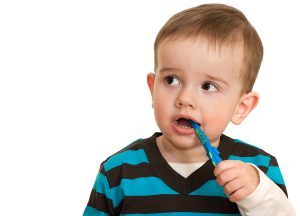

It’s a good idea to change your sheets about once a week. Wash them in warm or hot water with a regular detergent. Bleach or a bleach-alternative is also a good way to keep them sanitized.

The American Dental Association recommends replacing your toothbrush every three months. Antibacterial soaps do little to kill the bacteria found on toothbrushes. To clean it, try running it through your dishwasher about once a week, since the high heat will help sterilize the brush. Finally, don’t share your toothbrush with anyone, and avoid storing it in a communal cup or container. Store each brush separately in an upright position to allow the bristles to dry after each use.

The American Academy of Dermatology recommends replacing your powders and eye shadows every two years, foundation every year, and mascara every three months. Wash any applicators frequently with regular soap and water, and wipe your brushes with alcohol. Finally, do not share your makeup with others. This is a sure-fire way to contract an infection or illness, such as conjunctivitis (pink eye).

The best solution for cleaning your kitchen sink is to use a bleach-based cleaner. Stainless steel sinks can benefit from a good scrub with a mild soap. Another option is to use white vinegar to sanitize and to remove any stubborn stains or spots. Just make sure to always rinse your sink well after cleaning it, no matter what kind of solution you use.

Disinfecting and cleaning a sponge is easy. Toss it in the dishwasher, or wet and microwave it for 1-2 minutes. According to the United States Department of Agriculture (USDA), microwaving your sponge for 1 minute significantly reduces bacteria, mold, and yeast counts. Microwaving your sponge for 2 minutes kills 99% of the bacteria living in it. Keep in mind, you don’t need to kill every bacterium out there – only the ones that can make you sick.

To help keep your purse clean, do not put it on the floor of any public place, such as the train, bus, or public restroom. Wipe it down every day with an alcohol-based sanitizer. Avoid using antibacterial products, since these can actually kill good bacteria and make bad bacteria like E. coli more resilient to cleaning solutions. If your purse is machine washable, toss it in the wash every couple of weeks. Using the gentle cycle will help it keep its shape and color.
And don’t forget about all the germy items that can be found in your purse, like your cell phone and keys. Giving these a quick clean with a sanitizing wipe will keep bacteria from invading your purse’s interior, too.

Another alternative is to forgo wall-to-wall carpeting altogether and stick with area rugs. You can machine-wash area rugs using regular detergent, making it easier to keep germs that cause illnesses and diseases out of your home.

Try to get in the habit of carrying an alcohol-based sanitizer with you. This can be as effective as soap and water to rid your hands of any harmful germs you may have picked up during your daily activities.

The Centers for Disease Control (CDC) recommends regularly wiping down your desk with a disinfectant. Bleach or alcohol-based cleaners do the trick; antibacterial cleaners are not necessary. If you use the office kitchen, make sure to wash your hands with warm water and regular soap before and after eating your lunch. Washing your hands for 15 to 20 seconds is sufficient enough to kill off any harmful germs that may be lingering. Alcohol-based hand wipes and gel sanitizers also work when soap and water are not available.

You may know that washing your hands is essential, especially during cold and flu season, but do you know how to wash them effectively? The CDC recommends washing your hands, front and back, for 15-20 seconds with regular soap and water (no need for antibacterial soaps–using these can actually cause adverse effects). A good rule of thumb is to recite the entire alphabet in your head from start to finish while scrubbing up. This is sufficient time to rid your hands of any harmful germs that may be lingering.





